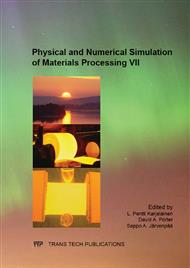p.14
p.22
p.31
p.38
p.47
p.55
p.62
p.70
p.76
Comparison of Material Properties and Creep Behavior of 20MnCr5 and S275JR Steels
Abstract:
t is well known that the optimization procedure has an important role in the structure design. Furthermore, experimentally obtained data of material behavior is known to serve as the most relevant data in the mentioned design procedure. Therefore, this paper sets out to examine some experimentally determined data of the material subjected to certain environmental conditions. Based on these parameters, some analyses of material behavior can be made. In addition, data are of such nature that it is possible to make an appropriate comparison between the two investigated materials. Materials under considerations were 20MnCr5 steel and S275JR steel. Both of materials have been subjected to the same environmental conditions and the following properties can be singled out: ultimate tensile strength, 0.2 offset yield strength, the modulus of elasticity, elongation, creep behavior and Charpy impact energy. Each of the mentioned details are determined by the corresponding test, e.g. data related to strengths and to creep behavior are determined by tensile tests while impact energy is determined by Charpy impact test. In this way, the obtained values are presented in the form of the engineering stress-strain diagrams, creep curves and impact energy data.
Info:
Periodical:
Pages:
47-54
Citation:
Online since:
July 2013
Authors:
Keywords:
Price:
Сopyright:
© 2013 Trans Tech Publications Ltd. All Rights Reserved
Share:
Citation:


